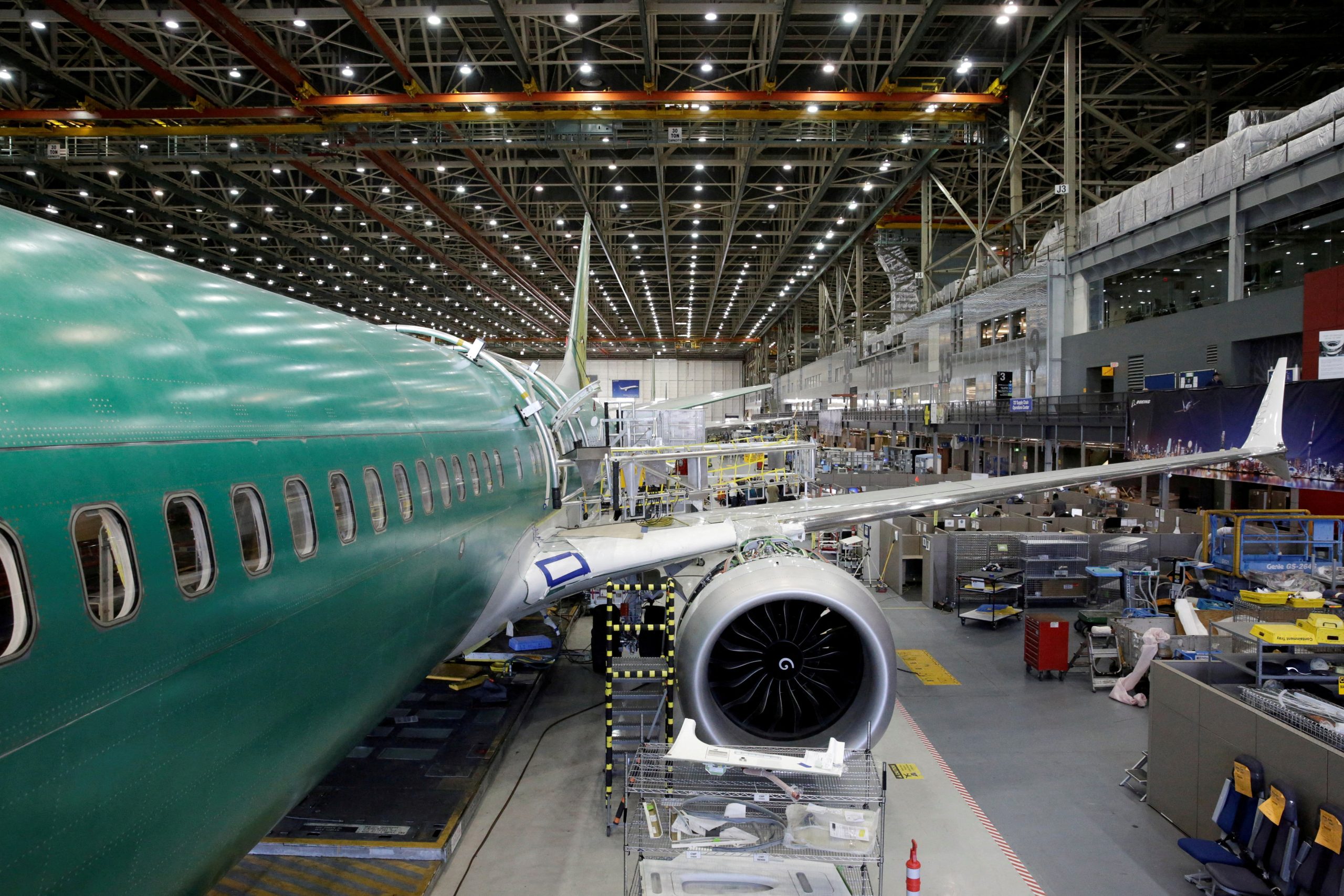Tech
Don’t Fall Victim: The 5 Most Dangerous Cybercrime Advancements

The digital age has revolutionised the way we live and conduct business. The internet has made it easier to connect with people and access information, but it has also made us more vulnerable to cyber threats. Cybercrime is on the rise, and it is becoming more sophisticated every day. In this article, we will explore the 5 most dangerous cybercrime advancements that you need to be aware of. Whether you’re an individual or a business owner, it’s crucial to understand these threats, their implications, and how you can protect yourself.
The Rise of ransomware attacks
Ransomware is a type of malware that encrypts a victim’s files and demands payment in exchange for the decryption key. It’s a lucrative business for cybercriminals, and it’s becoming more prevalent. In 2020, ransomware attacks increased by 485%, and the average ransom increased by 178%. The impact of a ransomware attack can be devastating for both individuals and businesses. It can lead to data loss, financial loss, and reputational damage.
One of the biggest challenges with ransomware is that it’s constantly evolving. Cybercriminals are always finding new ways to bypass security measures and target vulnerable systems. They use social engineering tactics like phishing emails to trick users into downloading malware, and they target critical infrastructure like hospitals and government agencies.
To protect yourself from ransomware, it’s essential to keep your software up to date, use strong passwords, and regularly back up your data. You should also be cautious when opening emails, downloading attachments, and clicking on links. If you become a victim of a ransomware attack, it’s important to report it to the authorities and not pay the ransom.
Phishing scams and email fraud
Phishing scams are a type of social engineering attack that targets individuals with the goal of stealing their personal information. Cybercriminals use fake emails, text messages, and websites to trick users into giving up their login credentials, credit card numbers, and other sensitive data. Phishing scams are becoming more sophisticated, and they can be challenging to detect.
Email fraud is another common tactic used by cybercriminals. They impersonate legitimate sources, such as banks or government agencies, and ask for personal information. They may also ask for money or request that you click on a link that downloads malware onto your computer.
To protect yourself from phishing scams and email fraud, it’s crucial to be vigilant and skeptical of any unsolicited emails or messages. You should also verify the sender’s identity and check the URL of any links before clicking on them. Additionally, you should use two-factor authentication for all your accounts and regularly monitor your bank and credit card statements for any suspicious activity.
Malware attacks and the dangers of public Wi-Fi
Malware is a type of software that’s designed to harm your computer or steal your information. It can be delivered through emails, websites, and even USB drives. Cybercriminals use malware to gain access to your computer or network and steal your personal information or use your computer to launch attacks on other systems.
Public Wi-Fi is a common target for cybercriminals to deliver malware. Public Wi-Fi networks are often unsecured, which means that any data transmitted over them can be intercepted by cybercriminals. They can use this opportunity to deliver malware or steal your personal information.
To protect yourself from malware attacks and the dangers of public Wi-Fi, it’s crucial to use antivirus software and keep your software up to date. You should also avoid using public Wi-Fi networks for sensitive activities like online banking or shopping. If you must use public Wi-Fi, use a virtual private network (VPN) to encrypt your traffic and protect your privacy.
Prevention and protection strategies for individuals and businesses
The best defence against cybercrime is prevention. Individuals and businesses can protect themselves by implementing a variety of strategies to reduce their risk of cyber attacks.
For individuals, it’s crucial to use strong passwords, enable two-factor authentication, and keep their software up to date. They should also be cautious when opening emails or clicking on links and avoid using public Wi-Fi networks for sensitive activities.
For businesses, it’s important to implement a comprehensive cybersecurity strategy that includes regular employee training, strong access controls, and regular vulnerability assessments. They should also have a plan in place in case of a cyber attack and regularly backup their data to reduce the impact of a ransomware attack.
The importance of cybersecurity education and training
One of the most significant challenges in the fight against cybercrime is the lack of education and training. Many individuals and businesses are not aware of the risks of cybercrime or the steps they can take to protect themselves.
Education and training are key to reducing the risk of cyber attacks. Individuals and businesses should regularly participate in cybersecurity training to learn about the latest threats and prevention strategies. They should also stay up to date with the latest cybersecurity news and trends to stay ahead of potential threats.
Cybercrime is a significant threat to individuals and businesses. Cybercriminals are using sophisticated tactics to steal personal information, money, and even identities. It’s crucial to understand these threats and take the necessary steps to protect yourself.

Business
Boeing mulls shedding Airbus work in potential Spirit Aero deal

Boeing (BA.N)is looking at how Spirit AeroSystems (SPR.N) could shed or sharply reduce its ties to Airbus (AIR.PA), as the supply-chain giant’s work for the European planemaker poses complications in rival Boeing’s attempt to acquire its former subsidiary.
The U.S. planemaker is exploring offloading or redeploying specific Spirit businesses that supply key Airbus components if it reaches a deal, according to sources familiar with the matter.
Boeing (BA.N), is looking at how Spirit AeroSystems (SPR.N) could shed or sharply reduce its ties to Airbus (AIR.PA) as the supply-chain giant’s work for the European planemaker poses complications in rival Boeing’s attempt to acquire its former subsidiary.
The U.S. planemaker is exploring offloading or redeploying specific Spirit businesses that supply key Airbus components if it reaches a deal, according to sources familiar with the matter.
Boeing is also fine-tuning a defensive strategy in case European regulators take issue with Airbus relying on its main rival for key components in its supply chain, some of which are custom-made using proprietary design and technology.
The Airbus business generated a fifth of Spirit Aero’s revenue in 2023, making it sizeable enough to factor in to a potential deal, though Boeing could complete a Spirit purchase without a sale of those businesses.
However, Boeing does not want to own Spirit Aero’s Airbus business, which includes wing-making for the small A220 jet in Belfast, Northern Ireland that loses money, the sources said.
The four sources requested anonymity because the deliberations are confidential.
Spirit, which has a market value of close to $3.8 billion, has already held exploratory talks with Airbus about selling the plant, Reuters reported this month.
It is unclear how receptive Airbus might be to taking over Spirit operations. While its options to block a sale of Spirit to Boeing outright are limited, Airbus has significant lobbying power with European governments and could try to force Boeing to buy its way out of Spirit’s Airbus contracts, the sources said.
“There are very active conversations but no clear road map,” one of the sources said, adding that Airbus was studying all options.
Airbus and Boeing both declined comment.
Boeing has also been looking at whether other companies may be interested in Spirit’s Airbus business, the sources said. It was not immediately clear if any interested party has emerged.
Spirit Aero spokesman Joe Buccino said the company is committed to acting in the best interests of customers, employees and shareholders. “As commercial negotiations with Airbus continue, many options remain viable,” Buccino said, without elaborating.
PRODUCTION ISSUES
Boeing would gain more control of its production by buying back Spirit, but could have to pay large sums to buy its way out of contracts.
Spirit makes a key fuselage section and wing spars for the Airbus A350 wide-body jet at its Kinston plant in North Carolina, and wing parts for Airbus at Prestwick in Scotland.
“The Airbus A350 composite technology is sensitive because Airbus wouldn’t want a rival in charge of important pieces in their production,” aerospace analyst Richard Aboulafia said.
Spirit’s backlog at the end of the fourth quarter of 2023 was approximately $49 billion, which includes work packages on all commercial platforms in the Airbus and Boeing backlog.
According to its latest annual report, 19% of Spirit Aero’s revenue derives from Airbus projects, up from 10% in 2013.
Spirit also has been trying to secure better prices from Airbus, at a time when the European planemaker is looking for some supplier price cuts.
Without better prices, Spirit could lose more than $400 million annually while supplying Airbus with parts for its A220 and A350 aircraft in the coming years, TD Cowen analysts said.
“We don’t see a Boeing-Spirit deal until Spirit’s pricing issue on the A220 has been sorted out and there is clarity on what happens to the rest of the Airbus work,” they wrote earlier this month.
© Reuters
Business
Aston Martin delays first electric car as losses narrow

Aston Martin (AML.L) is delaying the launch of its first electric car because of a lack of consumer demand, it said on Wednesday, as record prices for its luxury and special edition models helped the British carmaker shrink annual losses.
Aston Martin is now targeting the launch of its battery electric vehicle (BEV) in 2026, a year later than planned – becoming the latest automaker to push back electrification goals as investment in capacity and technology has outpaced EV demand.
“The consumer demand (for BEVs), certainly at an Aston Martin price point, is not what we thought it was going to be two years ago,” Executive Chairman Lawrence Stroll told journalists.
Stroll said there was “much more driven demand” for plug-in hybrid vehicles, especially for a company like Aston Martin, as people “want some electrification … but (to) still have the sports car smell and feel and noise”.
Aston Martin’s first hybrid supercar, Valhalla, is on course to enter production this year.
The company’s annual pretax losses more than halved in 2023, coming in smaller than market expectations, after selling prices reached record levels as it delivered its Valkyrie models and other special edition cars.
Mercedes-Benz earlier this month delayed its electrification goal by five years and assured investors it would keep sprucing up its combustion engine models.
Last June, Aston Martin signed a supply agreement with Saudi Arabia-backed Lucid Group (LCID.O), to bolster its electrification strategy.
Stroll, who played down concerns about competition from Chinese EV maker BYD , added he was happy with the battery technology and platforms available to the company.
PIVOT
Fictional secret agent James Bond’s car brand of choice, Aston Martin has had a tough time since its market debut in 2018.
However, top shareholder Stroll has been trying to bolster its cash and margins by rolling out next-generation sports cars – the latest of which was the new Vantage sports model unveiled this month.
The carmaker’s shares were down 2% at 1047 GMT as investors fretted about its cash flow and volumes.
Aston Martin had hoped to turn free cash flow positive in the fourth quarter, but was hit by the timing of deliveries of its DB12 and Valour models.
It now expects positive cash generation in the second half of this year.
“Aston Martin is pumping reams of cash into marketing in a bid to help position itself at the ultra-luxury end of the spectrum. This pivot was never going to come cheap,” said Hargreaves analyst Sophie Lund-Yates.
Aston Martin reported an adjusted pretax loss of 171.8 million pounds ($217.4 million) for the year ended Dec. 31, compared with a 451 million pounds loss a year earlier.
Analysts, on average, expected a loss of 209 million pounds, according to a company-compiled consensus.
The company kept its near- and medium-term forecasts unchanged.
© Reuters
Business
Meta CEO Zuckerberg meets Japan PM Kishida in Tokyo to discuss AI

Meta Platforms (META.O) Chief Executive Mark Zuckerberg discussed artificial intelligence issues with Japanese Prime Minister Fumio Kishida on Tuesday during the Facebook founder’s trip through Asia.
“We had a good, productive conversation about AI and the future of technology,” Zuckerberg said in brief comments to reporters at the prime minister’s residence in Tokyo. He left without taking questions.
The meeting followed reports that Zuckerberg would visit South Korea at the end of this month to discuss AI with Samsung Electronics (005930.KS) chairman, Jay Y. Lee, and possibly meet South Korean President Yoon Suk Yeol.
Meta, the operator of Facebook, last week confirmed Zuckerberg was planning to visit South Korea.
Japan’s government and corporate sector are racing to catch up in AI development. In the past year, Kishida has met with OpenAI CEO Sam Altman and Nvidia (NVDA.O) CEO Jensen Huang to discuss AI regulation and infrastructure.
© Reuters
Business
Vodacom has been ordered to pay Please Call Me idea-man R29 billion — minimum

South Africa’s Supreme Court of Appeal has ordered Vodacom to pay Kenneth Nkosana Makate a minimum of R29 billion for his Please Call Me idea.
Court documents, which MyBroadband has seen, show that the Supreme Court has essentially ordered Vodacom to pay Makate between R28.99 billion and R55.37 billion.
This is much higher than previous assumptions that were based on Makate’s earlier statements and High Court filings.
The exact wording of the Supreme Court ruling was as follows:
“The applicant is entitled to be paid 5%–7.5% of the total revenue of the [Please Call Me] product from March 2001 to date of judgment by the Second Respondent, together with the Mora Interest thereon, alternatively interest in terms of Section 2A(5) of the Prescribed Rate of Interest Act,” the order stated.
It continued: “…the total revenue of the PCM product shall be that set out in Model 9A, 9B & 9BB submitted to the First Respondent by the Applicant (Annexure ‘NM30’–‘NM32’ to the Supplementary Founding Affidavit)”.
MyBroadband obtained these annexures and summarised the compensation Makate’s models arrived at.
Models 9B and 9BB were pretty straightforward as the final compensation based on 5%, 7.5%, and 15% revenue share were tabulated according to Mora Interest, compound interest, and Special Interest.
These models make certain assumptions about the number of Please Call Me messages sent over 18 years, their success rate, the average call duration, and the average call revenue.
The models then arrive at a total call revenue generated by Please Call Me of R194.8 billion over 18 years.
Model 9A was trickier to analyse as it assumed 15% revenue share and didn’t break down the final compensation by Mora Interest and Special Interest.
However, it provided a sub-total of estimated call revenue generated by Call Me messages that was close to Model 9B/9BB — R196.84 billion.
It then adds Please Call Me advertising revenue, “Recharge Me” revenue, and an additional estimate of how much it generated outside South Africa.
Under Model 9A, the total Please Call Me revenue comes to R273.39 billion. 5% of this came close to the 7.5% revenue share amounts in Model 9B/9BB, allowing us to expand our analysis using amounts already accepted by the Court.
The table below summarises how much the Supreme Court effectively ordered Vodacom to pay in its ruling handed down on 6 February 2024.
Vodacom has said it will challenge the Supreme Court’s ruling in the Constitutional Court.
Compensation / Revenue share Model 9A Model 9A
(call revenue only)Model 9B/9BB 5% revenue share with Mora Interest ~R43 billion ~R30 billion R28.99 billion 5% revenue share with Special Interest ~R55 billion ~R37 billion R36.91 billion 7.5% revenue share with Mora Interest N/A
(Over R55 billion)~R44 billion R43.48 billion 7.5% revenue share with Special Interest N/A
(Over R55 billion)R55+ billion R55.37 billion The amounts above are based on those provided by Makate’s legal team and accepted by the Supreme Court.
© My Broadband









You must be logged in to post a comment Login